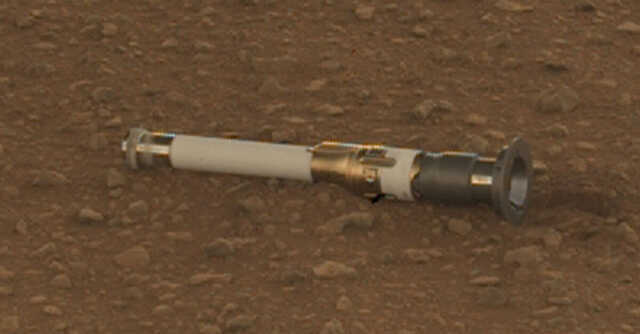
NASA’s Perseverance rover places the first sample tube on Mars’ surface


Space agency NASA’s Perseverance rover placed a titanium tube containing a rock sample on the surface of Mars. The rover is part of the space agency’s Mars mission that landed on the red planet in February 2021. As per the space agency, in the coming two months, the rover will deposit ten tubes at a location called ‘Three Forks’, as part of building the first sample depot on another planet.
This recent update marks a significant milestone in the Mars Sample Return campaign – a project by NASA and European Space Agency (ESA) to return samples collected from Mars back to Earth.
Perseverance has been collecting a pair of samples from each of its rock targets. Half of the pair is deposited at the Three Fork setup, which will serve as a backup, and the remaining half will be inside the rover. The rover will deliver samples to a future robotic lander which would use a robotic arm to place the samples in a containment capsule on a small rocket. This rocket will blast off to Mars orbit where another spacecraft will capture the sample containers and return back to Earth. The depots will serve as a backup, in cases where Perseverance is unable to deliver the samples. A pair of Sample Recovery Helicopters then would finish the job.

The first sample to be dropped was a chalk size igneous rock that was collected in January in the Mars Jerzero crater called South Séítah. The Sampling and Caching System of the Perseverance took about an hour to retrieve the tube from the inside of the rover and drop it to an 89 cm large selected patch of Martian surface.
Launched in June 2020, one of the key objectives of the Perseverance mission is caching samples that may indicate signs of ancient microbial life. As part of the mission, this rover will characterise Mars’ past climate and geology that would assist in the future human exploration of the planet. The Jet Propulsion Laboratory (JPL) has built and now manages the operations of the Perseverance rover. JPL is managed by the California Institute of Technology for NASA.
